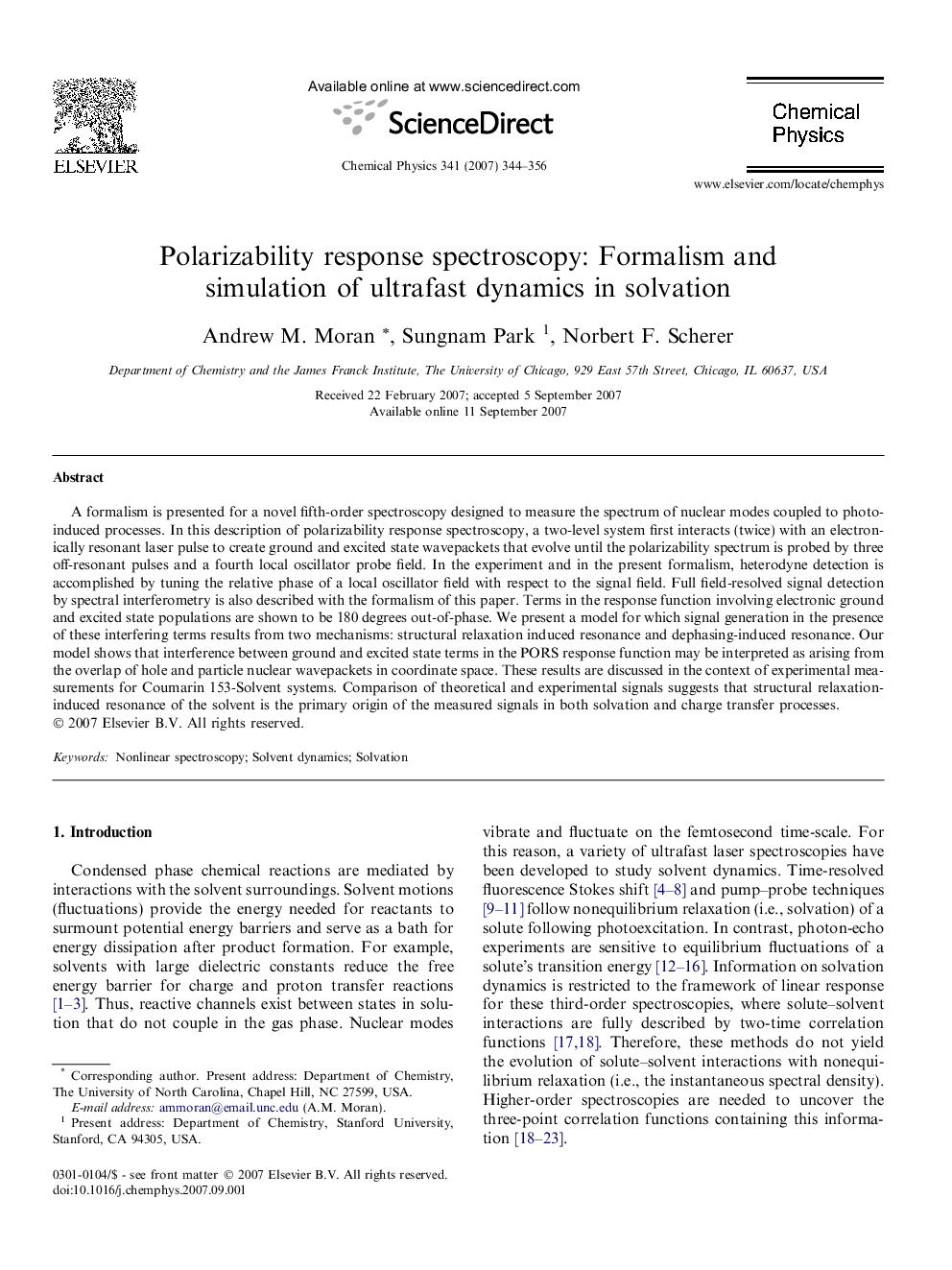| Article ID | Journal | Published Year | Pages | File Type |
|---|---|---|---|---|
| 5376115 | Chemical Physics | 2007 | 13 Pages |
Abstract
A formalism is presented for a novel fifth-order spectroscopy designed to measure the spectrum of nuclear modes coupled to photoinduced processes. In this description of polarizability response spectroscopy, a two-level system first interacts (twice) with an electronically resonant laser pulse to create ground and excited state wavepackets that evolve until the polarizability spectrum is probed by three off-resonant pulses and a fourth local oscillator probe field. In the experiment and in the present formalism, heterodyne detection is accomplished by tuning the relative phase of a local oscillator field with respect to the signal field. Full field-resolved signal detection by spectral interferometry is also described with the formalism of this paper. Terms in the response function involving electronic ground and excited state populations are shown to be 180 degrees out-of-phase. We present a model for which signal generation in the presence of these interfering terms results from two mechanisms: structural relaxation induced resonance and dephasing-induced resonance. Our model shows that interference between ground and excited state terms in the PORS response function may be interpreted as arising from the overlap of hole and particle nuclear wavepackets in coordinate space. These results are discussed in the context of experimental measurements for Coumarin 153-Solvent systems. Comparison of theoretical and experimental signals suggests that structural relaxation-induced resonance of the solvent is the primary origin of the measured signals in both solvation and charge transfer processes.
Related Topics
Physical Sciences and Engineering
Chemistry
Physical and Theoretical Chemistry
Authors
Andrew M. Moran, Sungnam Park, Norbert F. Scherer,
